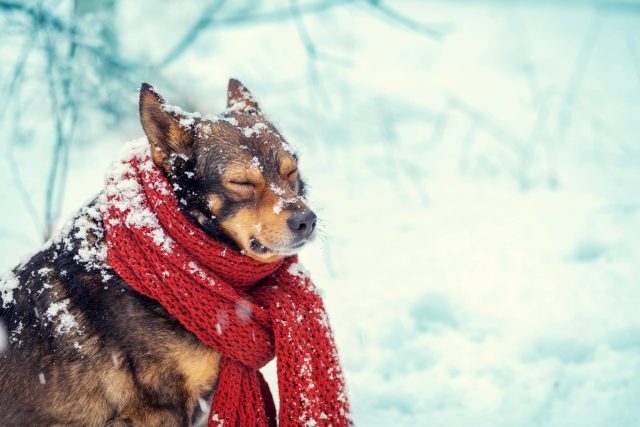
As temperatures drop and the days grow shorter, many dog owners notice changes in their furry friends’ behavior. Just like humans, dogs can be affected by seasonal changes, including shifts in mood, energy levels, and habits. Understanding these changes and learning how to support your canine companion through the winter months is essential for maintaining their health and happiness.
Do Dogs Suffer From Seasonal Depression?
Yes, dogs can experience a version of the “winter blues.” While it may not be identical to human Seasonal Affective Disorder, the lack of sunlight and reduced outdoor activity can affect their mood and behavior. Signs of the “winter blues” in dogs may include lethargy, clinginess, and changes in appetite. Providing stimulation, light exposure, and maintaining routines can help alleviate these symptoms.
Behavioral Changes in Dogs During Cold Weather
- Reduced Energy Levels
- Dogs often become less active in cold weather. The shorter daylight hours and colder temperatures may cause them to feel lethargic, leading to decreased enthusiasm for playtime and walks.
- This behavior is partly instinctual, as conserving energy during the winter months would have helped wild ancestors survive harsh conditions.
- Increased Sleep
- Many dogs tend to sleep more during the winter. The combination of reduced physical activity and fewer daylight hours can contribute to extended nap times.
- Changes in Appetite
- Some dogs may experience an increase in appetite during colder months. This is often due to their bodies burning more calories to stay warm, prompting a need for additional energy.
- On the other hand, dogs that are less active might eat less due to reduced energy expenditure.
- Mood Swings or Winter Blues
- Dogs can experience a form of Seasonal Affective Disorder (SAD), often referred to as the “winter blues.” Reduced exposure to sunlight can affect serotonin levels, leading to changes in mood or increased anxiety.
- Clinginess or Seeking Warmth
- Dogs may become more affectionate or clingy during winter as they seek warmth and comfort from their human companions. They may also curl up more frequently in blankets, beds, or warm corners of the home.
- Increased Sensitivity to Cold
- Dogs with short coats or smaller body sizes may shiver, resist going outside, or show signs of discomfort in the cold.
- Older dogs and those with arthritis may exhibit stiffness or reluctance to move, as cold weather can exacerbate joint pain.
Why These Changes Occur
The behavioral changes observed in dogs during cold weather can be attributed to both biological and environmental factors:
Biological Responses:
Dogs’ metabolisms adapt to temperature changes. They may conserve energy, produce more body fat, or grow thicker coats to stay warm.
Reduced Daylight:
Less sunlight affects melatonin and serotonin production, influencing mood, sleep, and energy levels.
Instincts:
In the wild, animals conserve energy during harsh winters, and some of these instincts persist in domestic dogs.
How You Can Help Your Dog Beat The Winter Blues
- Keep Them Warm
- Provide cozy bedding and blankets, and consider doggy sweaters or jackets for breeds with short coats.
- Limit exposure to the cold and ensure walks are kept brief during extreme weather.
- Maintain Exercise Levels
- Engage dogs in indoor activities, such as tug-of-war, hide-and-seek, or puzzle toys, to keep their bodies and minds active.
- If weather permits, continue outdoor activities with protective clothing and paw care to prevent frostbite.
- Provide Adequate Nutrition
- Monitor your dog’s diet to ensure they are receiving the right amount of food for their activity level.
- Supplement with omega-3 fatty acids to promote joint health, especially in older dogs.
- Increase Sunlight Exposure
- Open blinds and curtains to let natural light into your home.
- Take advantage of sunny days for walks to improve both mood and vitamin D production.
- Comfort and Security
- Create a warm, inviting space where your dog feels safe and comfortable.
- Spend quality time with your dog to ease any anxiety or mood changes.
- Visit the Vet if Needed
- If you notice significant changes in behavior, appetite, or mobility, consult your veterinarian to rule out any health issues that might be exacerbated by cold weather.
Helping Your Dog Thrive Through Seasonal Changes
Seasonal changes can have a profound impact on your dog’s behavior, and cold weather brings unique challenges for pet parents. By understanding these shifts and addressing your dog’s physical and emotional needs, you can ensure they remain happy, healthy, and active during the winter months. Keep an eye out for changes, adapt routines as needed, and don’t hesitate to consult a veterinarian for guidance. With proper care, your furry friend can thrive regardless of the weather outside.





